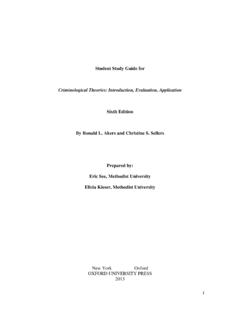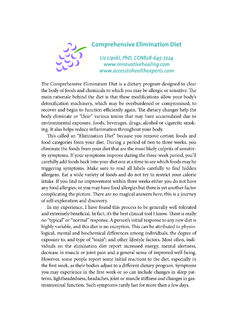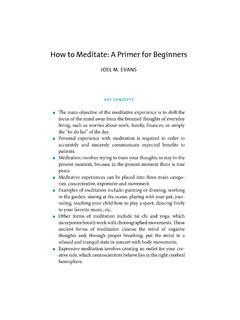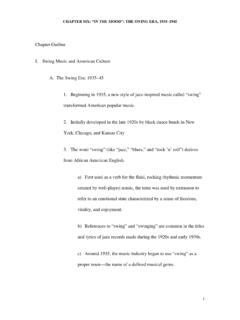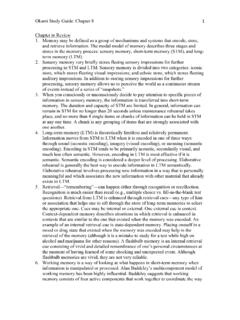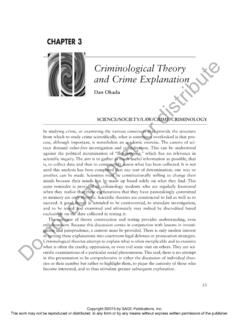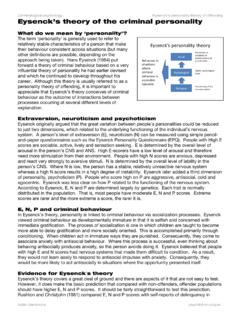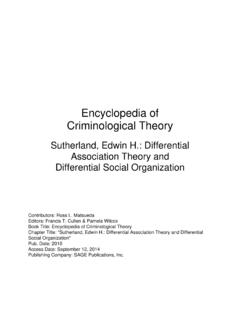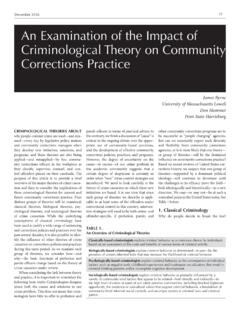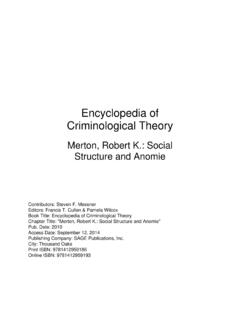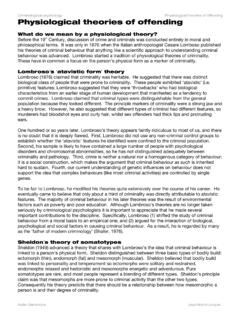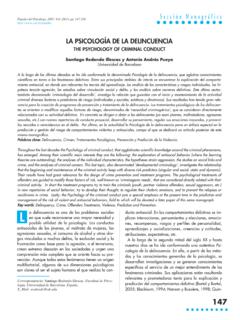Transcription of Student Study Guide for - Oxford University Press
1 Student Study Guide for criminological Theories: Introduction, Evaluation, Application Sixth Edition By Ronald L. Akers and Christine S. Sellers Prepared by: Eric See, Methodist University Elicia Kieser, Methodist University New York Oxford Oxford University Press . 2013. 1. Chapter 1. Introduction to criminological theory Terms Causality. A concept more applicable to the hard sciences. Does the appearance of X. cause effect Y? In a perfect relationship, the appearance of X would always cause the effect Y each and every time the relationship is seen.
2 Empirical Validity. This is the most important factor in evaluating a theory , and means that the theory has been supported by research evidence. Ideology. A belief system and a set of core values or philosophy. In a pure sense, an ideology states or explains how things should be, and a theory explains how things actually are. Internal Logical Consistency. A theory needs to be presented in a logical manner and to have clearly stated propositions that agree with or do not contradict one another. Restated, does the theory make logical and consistent sense?
3 Macro. Macro theories of criminal behavior explain the big picture of crime crime across the world or across a society. They attempt to answer why there are variations in group rates of crime . Other authors have used the terms epidemiology or social structural theories. Micro. Micro theories of criminal behavior focus on a small group of offenders or on an individual crime . They attempt to answer why some individuals are more likely than others to commit crime . Other authors have used the terms individual conduct . or processual theories.
4 Necessary Condition. This means that X must be present to produce effect Y. If X. is not present, Y will not occur. Parsimony. This refers to how many propositions, steps, or statements are involved. How simple is the theory ? Policy Implications. If the theory is empirically valid, what solutions are suggested. Probabilistic Causality. A concept more applicable to the social sciences. X is more or less likely to cause effect Y. Restated, X tends to cause Y. Scope. Refers to how much or how many types of crime or deviance the theory covers.
5 Soft Determinism. The view that human behavior is not wholly caused, determined, or 2. predictable by any set of biological, psychological, or sociological forces but that these interact with exercise of choice and will by individuals. Therefore, explaining or predicting human behavior is difficult. Sufficient Condition. Each time X is present, effect Y will always occur. Tautology. Circular reasoning. If a theory states that greed causes people to commit crime , and then says we know Jon is greedy because he committed a crime , it becomes impossible to subject the theory to the scientific process.
6 In this case, you would find that greed has been defined as someone who commits criminal acts. The circle of the reasoning never stops. Testability. To be valid and ultimately useful, a theory must be able to be subjected to scientific research. Theories may be untestable if they are tautological, propose causes that are not measurable, or are so open-ended that empirical findings can always be re- interpreted to support the theory . theory . In simple terms, theory is an explanation of something. Theories of Criminal and Deviant Behavior.
7 Theories in this category attempt to explain why an individual commits criminal or delinquent acts. Theories of Law and Criminal Justice. Theories in this category attempt to explain how laws are made, and how the criminal justice system operates as a whole. Usefulness. This refers to the real-world applications that the theory proposes or suggests, and the ability to implement those applications. Key Concepts 1. Theories are useful tools that help us to understand and explain the world around us. In criminology, they help us to understand the workings of the criminal justice system and the actors in the system.
8 2. Theories suggest the way things are, not the way things ought to be. They are not inherently good or bad; however, they can be used for good or bad purposes. 3. A theory can try to explain crime for a large social unit or area (macro), or it can attempt to explain crime at the individual or smaller unit level (micro). 4. Because we are dealing with human behavior, the social sciences will never be like the hard sciences. In the hard sciences, the theory of relativity will not change. In the social sciences, however, we deal with probabilities.
9 The social scientist will say things such as, A severely neglected child will probably commit, or tend to commit, delinquent acts.. 5. To be used for maximum effectiveness, theories must make sense (logical consistency), explain as much crime as possible (scope), and be as concise as possible (parsimony). Most important, the theory must be true or correct (validity). Having 3. met these basic goals, the theory must then have some real world applications and policy implications. 6. Many theories have common traits, but differences among them still exist.
10 Understanding these differences is key to understanding the often contradictory views of crime and deviance they purport to explain. Chapter Review The goal of criminological theory is to help one gain an understating of crime and criminal justice. Theories cover the making and the breaking of the law, criminal and deviant behavior, as well as patterns of criminal activity. Individual theories may be either macro or micro. Theories can be used to Guide policy making, and can be evaluated on a number of criteria including: clarity, scope, parsimony, testability, practical usefulness, and empirical validity.
